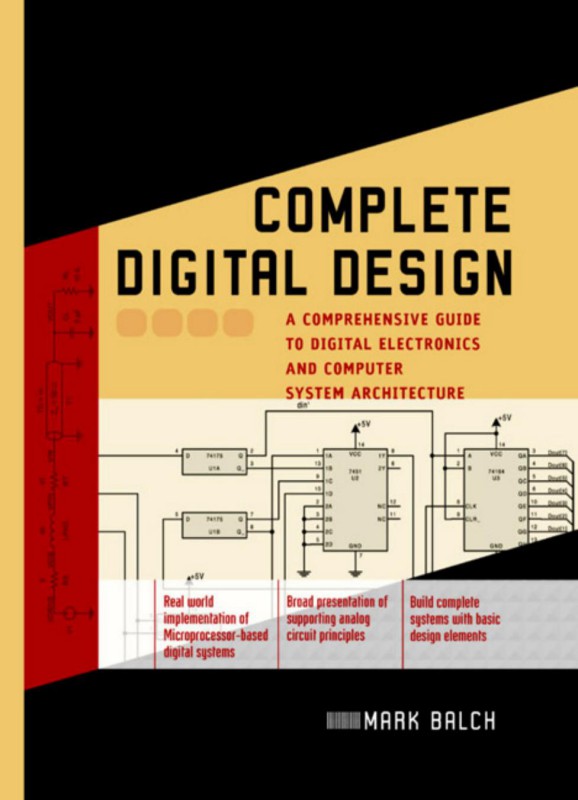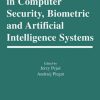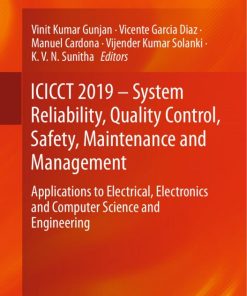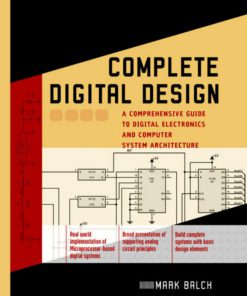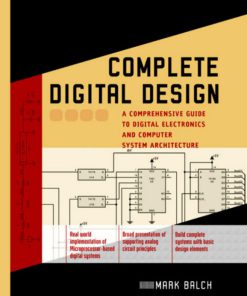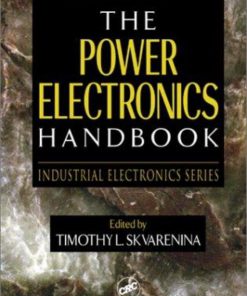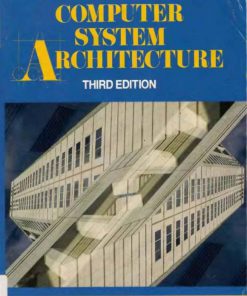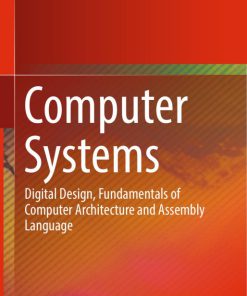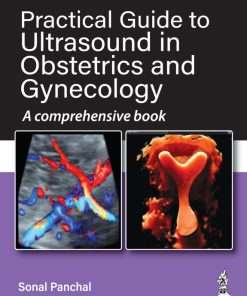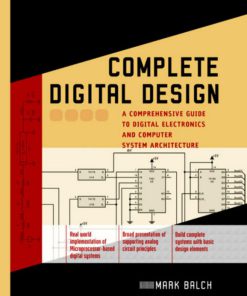(Ebook PDF) A Comprehensive Guide To Digital Electronics and Computer System Architecture 1st edition by Mark Balch 0071433473 9780071433471 full chapters
$50.00 Original price was: $50.00.$25.00Current price is: $25.00.
Authors:Mark Blach , Series:Computer Science [1] , Tags:Electrical; Electronics , Author sort:Blach, Mark , Ids:9780070601420 , Languages:Languages:eng , Published:Published:Nov 2005 , Publisher:(Ebook – English) Mcgraw-Hill , Comments:Comments:There are over 350,000 electrical and electronics engineers, and hundreds of thousands more electronics technicians and hobbyists. With the addition of so many communications topics into EE programs in the past 5 years, fundamentals of digital design have been abandoned for briefer, overview courses, leaving many newly-minted EEs undereducated in what should be one of their core competencies. In order to design and implement digital systems, one must understand and navigate many components, architectures, and practices which are painfully inter-dependent. This book will allow the reader faced with a design problem to develop a customized set of requirements for that problem, then research and evaluate available components and technologies to solve it.
A Comprehensive Guide To Digital Electronics and Computer System Architecture 1st edition by Mark Balch – Ebook PDF Instant Download/DeliveryISBN: 0071433473, 9780071433471
Full download A Comprehensive Guide To Digital Electronics and Computer System Architecture 1st edition after payment.
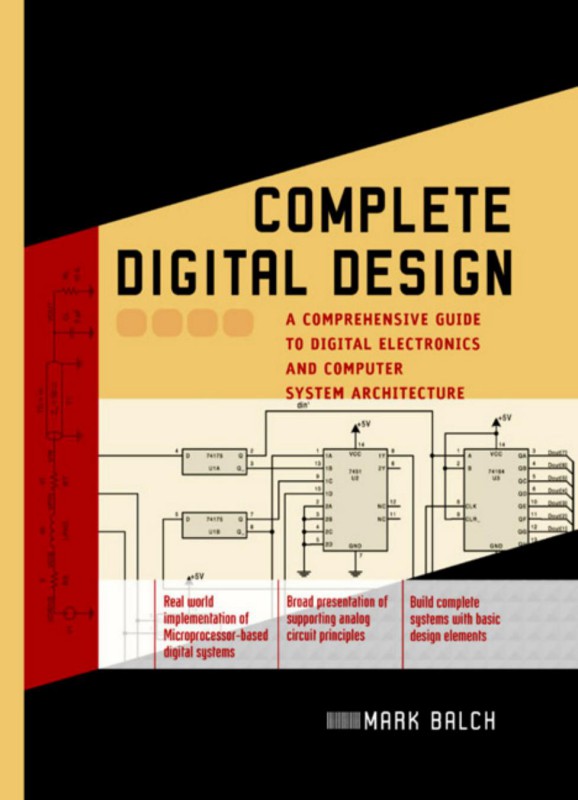
Product details:
ISBN-10 : 0071433473
ISBN-13 : 9780071433471
Author : Mark Balch
YOUR ONE-STOP RESOURCE FOR DIGITAL SYSTEM DESIGN!The explosion in communications and embedded computing technologies has brought with it a host of new skill requirements for electrical and electronics engineers, students, and hobbyists. With engineers expected to have such diverse expertise, they need comprehensive, easy-to-understand guidance on the fundamentals of digital design.Enter McGraw-Hill’s Complete Digital Design. Written by an experienced electrical engineer and networking hardware designer, this book helps you understand and navigate the interlocking components, architectures, and practices necessary to design and implement digital systems. It includes: * Real world implementation of microprocessor-based digital systems * Broad presentation of supporting analog circuit principles * Building complete systems with basic design elements and the latest technologiesComplete Digital Design will teach you how to develop a customized set of requirements for any design problem—and then research and evaluate available components and technologies to solve it. Perfect for the professional, the student, and the hobbyist alike, this is one volume you need handy at all times!What you’ll find inside: * Digital logic and timing analysis * Integrated circuits * Microprocessor and computer architecture * Memory technologies * Networking and serial communications * Finite state machine design * Programmable logic: CPLD and FPGA * Analog circuit basics * Diodes, transistors, and operational amplifiers * Analog-to-digital conversion * Voltage regulation * Signal integrity and PCB design * And more!
A Comprehensive Guide To Digital Electronics and Computer System Architecture 1st Table of contents:
Part 1 Digital Fundamentals
Chapter 1 Digital Logic
1.1 Boolean Logic
1.2 Boolean Manipulation
1.3 The Karnaugh map
1.4 Binary and Hexadecimal Numbering
1.5 Binary Addition
1.6 Subtraction and Negative Numbers
1.7 Multiplication and Division
1.8 Flip-Flops and Latches
1.9 Synchronous Logic
1.10 Synchronous Timing Analysis
1.11 Clock Skew
1.12 Clock Jitter
1.13 Derived Logical Building Blocks
Chapter 2 Integrated Circuits and the 7400 Logic Families
2.1 The Integrated Circuit
2.2 IC Packaging
2.3 The 7400-Series Discrete Logic Family
2.4 Applying the 7400 Family to Logic Design
2.5 Synchronous Logic Design with the 7400 Family
2.6 Common Variants of the 7400 Family
2.7 Interpreting a Digital IC Data Sheet
Chapter 3 Basic Computer Architecture
3.1 The Digital Computer
3.2 Microprocessor Internals
3.3 Subroutines and the Stack
3.4 Reset and Interrupts
3.5 Implementation of an Eight-Bit Computer
3.6 Address Banking
3.7 Direct Memory Access
3.8 Extending the Microprocessor Bus
3.9 Assembly Language and Addressing Modes
Chapter 4 Memory
4.1 Memory Classifications
4.2 EPROM
4.3 Flash Memory
4.4 EEPROM
4.5 Asynchronous SRAM
4.6 Asynchronous DRAM
4.7 Multiport Memory
4.8 The FIFO
Chapter 5 Serial Communications
5.1 Serial vs. Parallel Communication
5.2 The UART
5.3 ASCII Data Representation
5.4 RS-232
5.5 RS-422
5.6 Modems and Baud Rate
5.7 Network Topologies
5.8 Network Data Formats
5.9 RS-485
5.10 A Simple RS-485 Network
5.11 Interchip Serial Communications
Chapter 6 Instructive Microprocessors and Microcomputer Elements
6.1 Evolution
6.2 Motorola 6800 Eight-bit Microprocessor Family
6.3 Intel 8051 Microcontroller Family
6.4 Microchip PIC® Microcontroller Family
6.5 Intel 8086 16-Bit Microprocessor Family
6.6 Motorola 68000 16/32-Bit Microprocessor Family
Part 2 Advanced Digital Systems
Chapter 7 Advanced Microprocessor Concepts
7.1 RISC and CISC
7.2 Cache Structures
7.3 Caches in Practice
7.4 Virtual Memory and the MMU
7.5 Superpipelined and Superscalar Architectures
7.6 Floating-Point Arithmetic
7.7 Digital Signal Processors
7.8 Performance Metrics
Chapter 8 High-Performance Memory Technologies
8.1 Synchronous DRAM
8.2 Double Data Rate SDRAM
8.3 Synchronous SRAM
8.4 DDR and QDR SRAM
8.5 Content Addressable Memory
Chapter 9 Networking
9.1 Protocol Layers One and Two
9.2 Protocol Layers Three and Four
9.3 Physical Media
9.4 Channel Coding
9.5 8B10B Coding
9.6 Error Detection
9.7 Checksum
9.8 Cyclic Redundancy Check
9.9 Ethernet
Chapter 10 Logic Design and Finite State Machines
10.1 Hardware Description Languages
10.2 CPU Support Logic
10.3 Clock Domain Crossing
10.4 Finite State Machines
10.5 FSM Bus Control
10.6 FSM Optimization
10.7 Pipelining
Chapter 11 Programmable Logic Devices
11.1 Custom and Programmable Logic
11.2 GALs and PALs
11.3 CPLDs
11.4 FPGAs
Part 3 Analog Basics for Digital Systems
Chapter 12 Electrical Fundamentals
12.1 Basic Circuits
12.2 Loop and Node Analysis
12.3 Resistance Combination
12.4 Capacitors
12.5 Capacitors as AC Elements
12.6 Inductors
12.7 Nonideal RLC Models
12.8 Frequency Domain Analysis
12.9 Lowpass and Highpass Filters
12.10 Transformers
Chapter 13 Diodes and Transistors
13.1 Diodes
13.2 Power Circuits with Diodes
13.3 Diodes in Digital Applications
13.4 Bipolar Junction Transistors
13.5 Digital Amplification with the BJT
13.6 Logic Functions with the BJT
13.7 Field-Effect Transistors
13.8 Power FETs and JFETs
Chapter 14 Operational Amplifiers
14.1 The Ideal Op-amp
14.2 Characteristics of Real Op-amps
14.3 Bandwidth Limitations
14.4 Input Resistance
14.5 Summation Amplifier Circuits
14.6 Active Filters
14.7 Comparators and Hysteresis
Chapter 15 Analog Interfaces for Digital Systems
15.1 Conversion between Analog and Digital Domains
15.2 Sampling Rate and Aliasing
15.3 ADC Circuits
15.4 DAC Circuits
15.5 Filters in Data Conversion Systems
Part 4 Digital System Design in Practice
Chapter 16 Clock Distribution
16.1 Crystal Oscillators and Ceramic Resonators
16.2 Low-Skew Clock Buffers
16.3 Zero-Delay Buffers: The PLL
16.4 Frequency Synthesis
16.5 Delay-Locked Loops
16.6 Source-Synchronous Clocking
Chapter 17 Voltage Regulation and Power Distribution
17.1 Voltage Regulation Basics
17.2 Thermal Analysis
17.3 Zener Diodes and Shunt Regulators
17.4 Transistors and Discrete Series Regulators
17.5 Linear Regulators
17.6 Switching Regulators
17.7 Power Distribution
17.8 Electrical Integrity
Chapter 18 Signal Integrity
18.1 Transmission Lines
18.2 Termination
18.3 Crosstalk
18.4 Electromagnetic Interference
18.5 Grounding and Electromagnetic Compatibility
18.6 Electrostatic Discharge
Chapter 19 Designing for Success
19.1 Practical Technologies
19.2 Printed Circuit Boards
19.3 Manually Wired Circuits
19.4 Microprocessor Reset
19.5 Design for Debug
19.6 Boundary Scan
19.7 Diagnostic Software
19.8 Schematic Capture and Spice
19.9 Test Equipment
People also search for A Comprehensive Guide To Digital Electronics and Computer System Architecture 1st:
a comprehensive guide to the 2020 nec
a simple guide to electronic components
a comprehensive guide to daoist nei gong
bga digital electronics
complete basic electronics course in english

